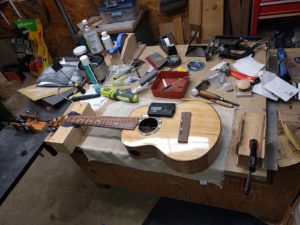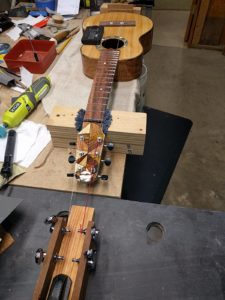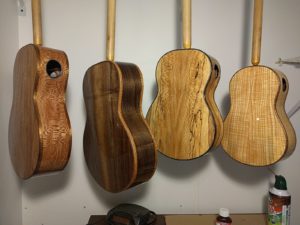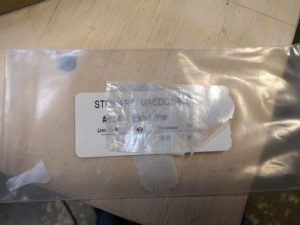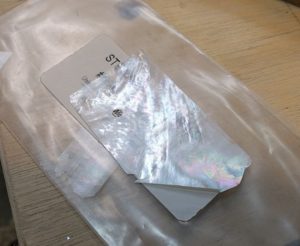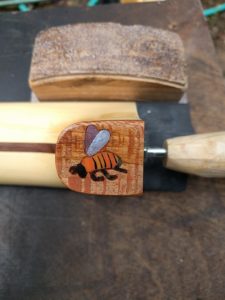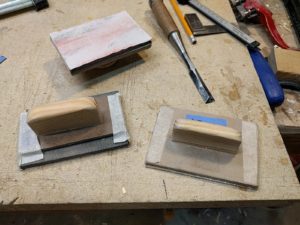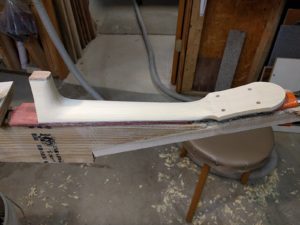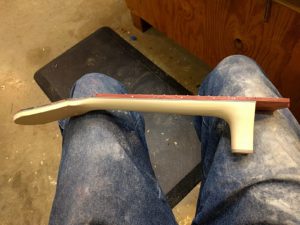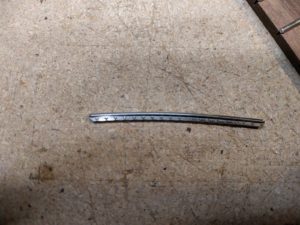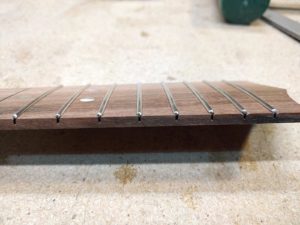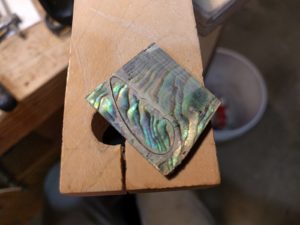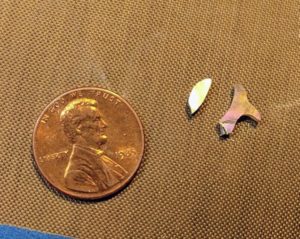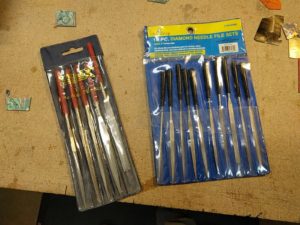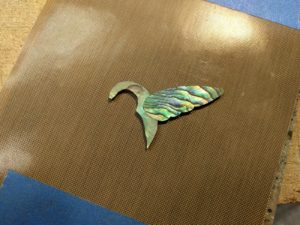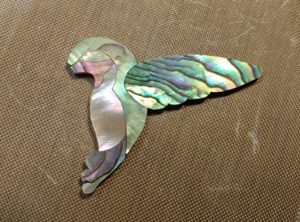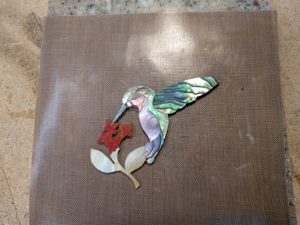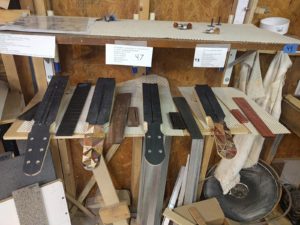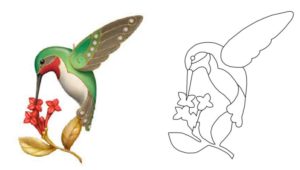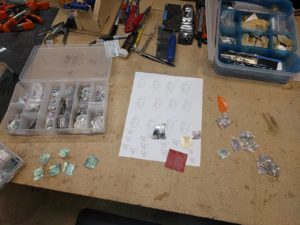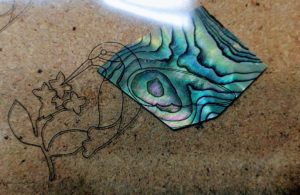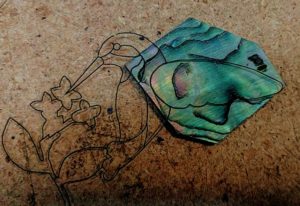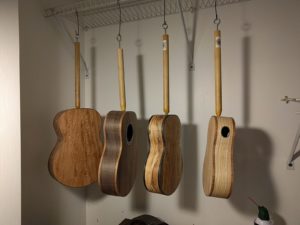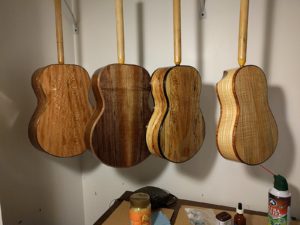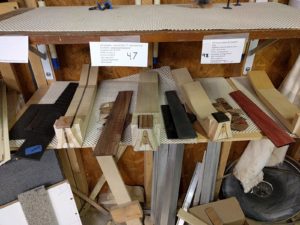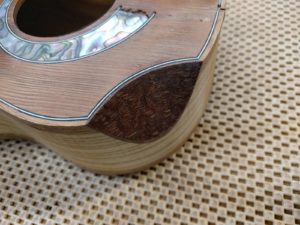The distance from the nut (or zero fret in my builds) is ‘almost’ the scale length. It is actually a hair longer, an additional distance that is called “compensation”. The compensation is there because as strings are fretted they are stretched slightly which makes the fretted note a bit sharp, so the bridge is moved back a bit so that the note sounds in tune. The amount of compensation depends on a number of factors, including: the particular brand of strings, the diameter of the strings, the distance of the strings above the fret (the ‘action’), and the scale length. Given all of this it is is very difficult, if not impossible, to predict the correct compensation for a instrument in advance.
One of the instruments I am building in this round is a guitalele with a 19 inch scale length. Being a small guitar it is getting strung with classical guitar strings. Now, what the heck sort of compensation should I build into the bridge?
To answer this question (I have had the same question on other instruments in the past) I built a simple setup that allows me to set the bridge position exactly, getting the compensation as an empirical process. Since strings are generally shipped pretty long, and in this case are very long for the 19″ scale instrument, I made an ‘end block’ to hold one end of the string and a block of tuners to hold the other end of the string. The string itself is stretched over the instrument, resting on the ‘bridge’ and the zero fret, as would a normal string. However, because the string is just resting on the instrument, there is no string tension force on the instrument itself and I can move the bridge around. With a small chromatic tuner resting on the instrument I can set the bridge position so that the note fretted at the 12’th fret is exactly an octave above the open note. I can do this with the brand of strings that will eventually be put on the instrument.
I use small ‘chips’ of bridge material sitting in the saddle slot so that I can easily set the action to a reasonable height (action goes into compensation) and there is room next to the chip to drill small positioning holes for nails down through the saddle slot so I can put the bridge on in just the right place.
